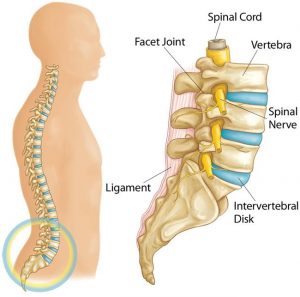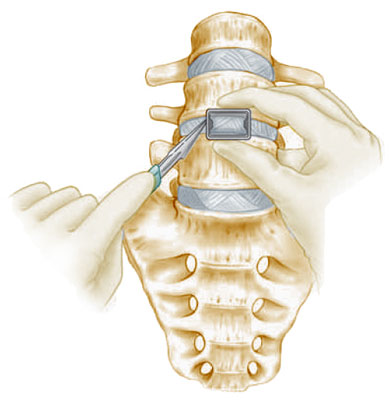Anterior Lumbar Interbody Fusion: ALIF is a type of arthrodesis for the fusion of two vertebrae so it is called like that. Intersomatic refers to the fact that we are going to act on the vertebral and anterior lumbar body, it talks about the approach to surgery.
 How is the ALIF technique performed?
How is the ALIF technique performed?
This surgery is performed through the abdomen on the contrary than in the posterior techniques. The objective is the same as the PLIF, TLIF and XLIF techniques, which is to access the disc to put graft and achieve the fusion of the vertebral segment. An incision is made in the left lateral abdomen. The muscles and all the abdominal contents are separated to the side to access the anterior part of the lumbar spine. The peritoneum is the envelope in which the abdominal viscera are found. When accessing behind the peritoneum, setting it aside, it is not really entered through the abdominal content, rather it is surrounded. Once you reach the anterior part of the lower back we have the large blood vessels that are the aorta and vena cava. This is the big problem of this technique.
Large vessels are delicate structures that, if damaged, cause great bleeding that can endanger the patient’s life. These vessels must be moved aside to act on the spine. Sometimes the traumatologist or neurosurgeon relies on a vascular surgeon to act more safely and be able to respond quickly to a complication.
Once the disk is accessed, the content is emptied and a box is placed as in the previous techniques. A bone graft is also added to help achieve fusion. In older times only bone grafting was placed but there was a much lower rate of fusions achieved. With current techniques, it is above 90%.
Then we would hold everything to hold it while we wait for the bone to hit. The graft can be fastened with screws in the vertebral body but the immobilization is not like the one we get with screws and bars by the posterior route. Depending on each case, it may be necessary to associate a posterior path to add stability. If support is not associated, there is the risk that the vertebral bodies will fracture and the structure will collapse by inserting the box into the vertebra.
Advantages of the anterior approach
– With the ALIF technique, the disc height can be better restored and lumbar lordosis preserved better than the TLIF and XLIF techniques.
– Upon entering the anterior route, the posterior musculature remains intact. Vertebral musculature is key in lumbar stability. Not damaging it makes the postoperative pain and hospital stay less as well as improving functionality in the future.
– If there are no vascular complications during surgery, it is the approach technique for arthrodesis that produces less blood loss.
You might also want to read: What is a Posterior Lumbar Interbody Fusion (PLIF)?

